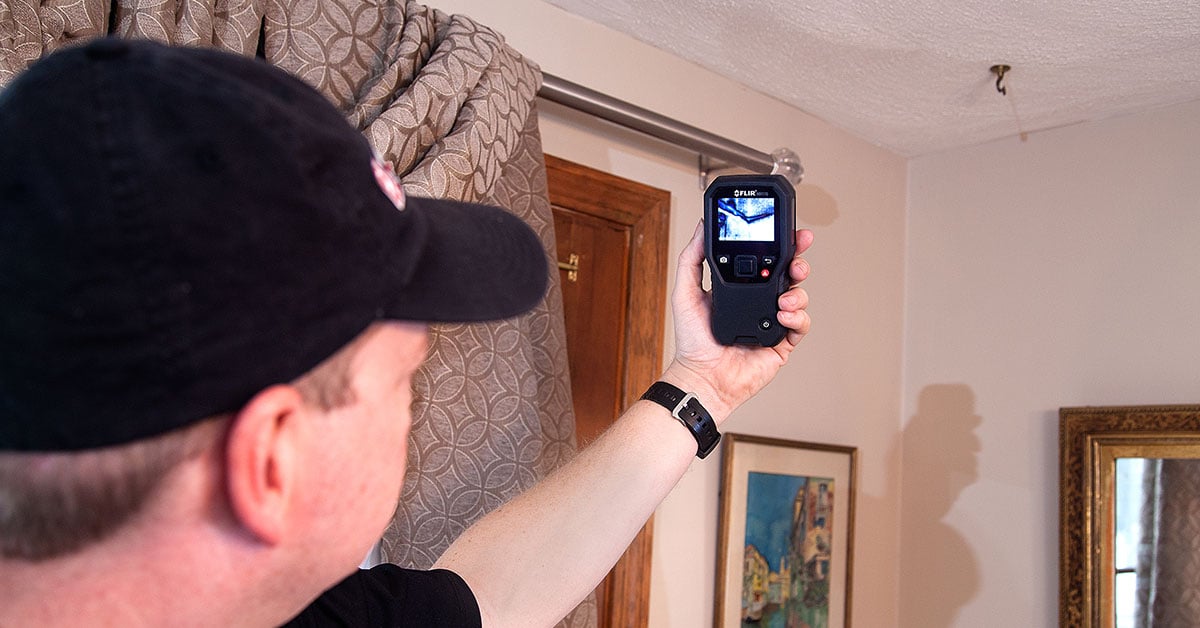Leading Water Leak Detection Strategies to Protect Your Building from Water Damages
Leading Water Leak Detection Strategies to Protect Your Building from Water Damages
Blog Article
Cutting-edge Solutions for Very Early Detection of Water Leakages in Buildings and Infrastructure
From innovative leakage discovery modern technologies to the deployment of IoT sensors for real-time monitoring, the landscape of leak prevention is progressing swiftly. Automated water circulation evaluation systems are improving just how leakages are identified and dealt with, paving the method for a positive technique to water leakage discovery.
Advanced Leakage Discovery Technologies
Advanced leakage detection technologies, outfitted with innovative sensors and formulas, play an important role in quickly identifying and determining water leaks in numerous settings. Electro-magnetic sensors can identify modifications in electromagnetic areas caused by water, supplying yet one more layer of leakage detection capacity.

IoT Sensors for Real-Time Monitoring
In the realm of contemporary water leakage detection, the assimilation of IoT sensing units for real-time monitoring represents an essential innovation in enhancing aggressive leak discovery capacities. These sensing units offer continuous tracking of water supply, giving real-time data on water flow rates, pressure variations, and temperature level modifications. By leveraging IoT innovation, these sensing units can spot also the tiniest abnormalities in water use patterns, enabling early identification of potential leaks prior to they escalate right into significant concerns.
IoT sensing units send information to a central platform, where sophisticated formulas examine the info and produce notifies or notices when irregularities are discovered. This real-time surveillance ability enables building proprietors or center supervisors to immediately address leaks, decreasing water damage, minimizing fixing expenses, and conserving water resources.
Additionally, IoT sensors can be incorporated with building management systems, allowing for computerized feedbacks to detected leakages, such as shutting off water valves or turning on pumps to minimize the effect of leaks. Overall, the execution of IoT sensing units for real-time monitoring significantly boosts the effectiveness and effectiveness of water leakage detection in structures and facilities.
Machine Understanding Algorithms for Leak Forecast

One key advantage of making use of artificial intelligence for leak prediction is its capacity to continually discover and improve its accuracy over time. As even more information is gathered and fed right into the formula, it can fine-tune its predictions and adapt to transforming problems, eventually boosting the dependability of leak discovery systems.
In addition, artificial intelligence algorithms can assist in identifying refined signs of leakages that may go undetected by traditional surveillance methods. water leak detection. By assessing complicated information embed in real-time, these formulas can supply very early warnings and signals, enabling punctual intervention and preventative maintenance to alleviate potential water damage and linked expenses
Making Use Of Thermal Imaging for Leak Discovery
Thermal imaging technology uses a promising technique for spotting water leakages in various systems and facilities. By making use of infrared radiation and temperature level variations, thermal imaging electronic cameras can identify covert leakages that are not conveniently visible to the naked eye. When water gets away from pipelines or structures, it typically transforms the temperature of the surrounding location, developing temperature level differentials that thermal cameras can catch. These temperature level abnormalities are after that translated into visible pictures, highlighting the precise place of the leakage.
One of the essential benefits of thermal imaging for my explanation leakage discovery is its non-intrusive nature. Unlike standard techniques that might need burglarizing wall surfaces or floorings to find leaks, thermal imaging enables non-destructive testing. This not only saves time and reduces costs but also minimizes disruption to the structure or infrastructure being examined. Furthermore, thermal imaging can swiftly check big areas, supplying an extensive summary of potential this page leak resources in a prompt fashion. Generally, the usage of thermal imaging innovation improves the efficiency and precision of water leakage discovery, making it an important tool for preserving the stability of buildings and infrastructures.
Automated Water Circulation Evaluation Equipments
How can automatic water flow evaluation systems transform the detection and monitoring of leaks in numerous systems and facilities? Automated water circulation evaluation systems offer an aggressive technique to leak discovery by constantly checking water flow prices and patterns. By establishing standard data, these systems can swiftly determine deviations that may show a leak, allowing prompt intervention to protect against substantial damages.
These systems utilize sophisticated formulas to analyze real-time data and give immediate alerts when abnormalities are detected, permitting swift activity to be taken. In addition, computerized water flow evaluation systems can be incorporated with building management systems or IoT platforms, boosting general efficiency and making it possible for remote surveillance capabilities.
Additionally, the data gathered by these systems can be utilized for anticipating maintenance functions, assisting to determine prospective weak points in the facilities before leaks occur. In general, the implementation of automated water flow evaluation systems can considerably improve leakage discovery and monitoring methods, eventually resulting in cost savings, reduced water wastage, and increased sustainability in structures and framework.

Conclusion
Finally, the combination of sophisticated leakage discovery modern technologies, IoT sensing units, machine knowing algorithms, thermal imaging, and automatic water circulation analysis systems uses innovative services for very early detection of water leaks in structures and infrastructure. These innovations make it possible for real-time check these guys out surveillance, forecast of leaks, and reliable detection methods to stop water damages and wastage. Implementing these services can aid in keeping the stability and sustainability of water supply in numerous settings.
Report this page